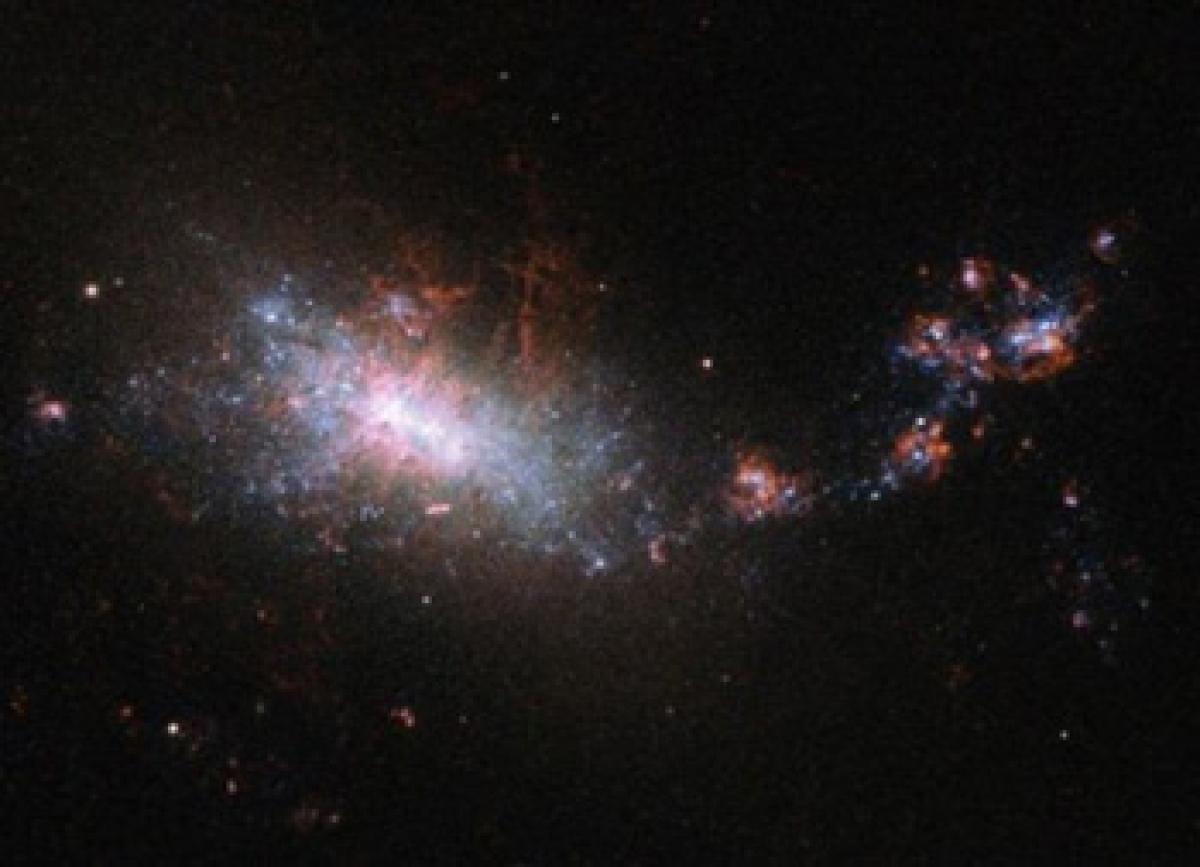How dark matter satellites trigger massive star birth

Using computer simulations, astronomers from the University of California-Riverside have presented a novel analysis of computer simulations, based on theoretical models to explain massive star formation observed in dwarf galaxies.
New York (IANS): Using computer simulations, astronomers from the University of California-Riverside have presented a novel analysis of computer simulations, based on theoretical models to explain massive star formation observed in dwarf galaxies.
The researchers found that during a dark matter satellite's closest approach to a dwarf galaxy, through gravity it compresses the gas in the dwarf, triggering significant episodes of starbursts. These star forming episodes may last for several billions of years, depending on the mass, orbit and concentration of the dark satellite.
One of the main predictions of the current model of the creation of structures in the universe, known as the Lambda Cold Dark Matter model, is that galaxies are embedded in very extended and massive halos of dark matter that are surrounded by many thousands of smaller sub-halos also made from dark matter.
Furthermore, similarly to mergers between more massive galaxies, the interaction between the dwarf galaxy and the dark satellite triggers morphological disturbances in the dwarf, which can completely change its structure from mainly disk-shaped to a spherical or elliptical system.
This mechanism also offers an explanation to the origin of isolated spheroidal dwarf galaxies, a puzzle that has remained unsolved for several decades.







